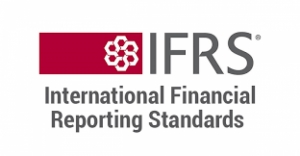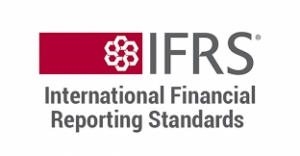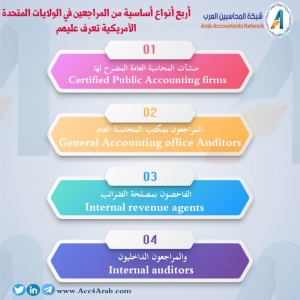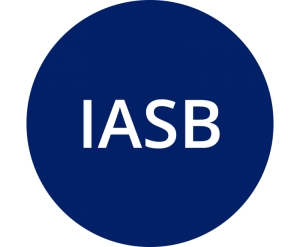عرض العناصر حسب علامة : GAAP
الأحد, 06 مارس 2022 10:05
الفرق بين التقارير المالية وتقارير الإدارة
معظم أصحاب الأعمال على دراية بالتقارير المالية الأساسية التي يجب أن يحصلوا عليها شهريًا، لكن الكثيرين ليسوا على دراية بأنواع التقارير الإدارية المتاحة التي يمكن أن تساعد أعمالهم على زيادة الأداء والربحية.
معلومات إضافية
-
المحتوى بالإنجليزية
Most business owners are familiar with the basic financial reports they should be getting monthly, but many are less familiar with the kinds of management reports available that could help their businesses increase performance and profitability.
Key Takeaways
Financial reporting is compliance-oriented and is used for external purposes. It encompasses the standard weekly, monthly and quarterly reports that companies receive each month
Management reports are great for CEOs to gain insight into specific areas of their business. However, you want to make sure you are getting the right reports that your business needs to drive strategic decision-making.
As the CEO or owner, do you have information available at hand to answer these questions:
Am I pricing my jobs right?
Did I make more this quarter than last?
Who are my most profitable customers?
Do I have enough cash to make payroll?
Who are my most and least productive staff?
Imagine your business potential if you had all the answers to these questions! You wouldn’t have to guess about where you stand or how to improve the operation of your company.
Make better business decisions! Get this sample reports guide...
• The KPI & Management Report Matrix to Increase Profits •
DOWNLOAD NOW!
How would you answer those questions? Hint: By looking at both your financial AND management reports! Most business owners don’t understand the difference between the two… so let’s review.
What is Financial Reporting?
Financial reporting is compliance-oriented and is used for external purposes. It encompasses the standard weekly, monthly and quarterly reports that companies receive each month which include:
Profit and Loss Statement
Balance Sheet
Accounts Payable
Accounts Receivable
Statement of Cash Flows
These reports are mandatory for all businesses. Banks, investors, and regulators use these reports to approve loans, lines of credit and to make sure you are following GAAP (Generally Accepted Accounting Principles).
These reports reflect the financial standing of your business at a specific point in time. They show the overall picture of how your company is performing but don’t give you real insight into the specifics of your operations. They look backward and don’t really inform you on how the business might perform next month or next quarter.
What is Management Reporting?
You will be able to dive deeper into the financial standing of your company through management reports which consist of:
نشر في
محاسبة و مراجعة
موسومة تحت
الخميس, 10 مارس 2022 09:50
مقدمة عن مبادئ المحاسبة المقبولة عمومًا
معلومات إضافية
-
المحتوى بالإنجليزية
What is GAAP?
What does GAAP stand for? GAAP stands for generally accepted accounting principles. Generally accepted accounting principles are a set of rules, standards, and procedures certain businesses and organizations must follow.
GAAP in accounting helps businesses:
Organize financial information into accounting records
Summarize accounting records into financial statements
Disclose certain supporting financial information
Generally accepted accounting principles ensure businesses use a standard method to report financial information. Think of these principles as a rulebook that companies follow when creating financial statements (e.g., income statement, balance sheet, and cash flow statement).
Under GAAP, you need to structure your financial statements the same way from year to year. And, financial statement outlines should be the same as other businesses following GAAP.
These accounting principles determine how to create financial statements. The standard format makes it easy for investors, lenders, and auditors to gather information about your business.
With GAAP, you must also use accrual accounting. Accrual accounting is the most complex method that uses more advanced accounts, such as accounts payable and long-term liabilities.
What principles does the GAAP include?
GAAP includes a wide range of topics, including financial statement presentation, assets, liabilities, equity, revenue, expenses, fair value, nonmonetary transactions, and so on.
The GAAP has 10 principles—the Principle of:
Regularity: Businesses must follow all specific rules and regulations.
Consistency: Consistently apply the same accounting standards to your entire accounting process.
Sincerity: Provide an accurate and impartial depiction of your business’s financial situation.
Permanence of Methods: The procedures you use in financial reporting should be consistent, making it easy to compare financial information.
Non-compensation: Businesses must report positives and negatives and be completely transparent about their finances. Report both assets and liabilities separately.
Prudence: Be prudent, or conservative, when deciding which accounting methods to use.
Continuity: Conduct accounting based on the assumption that your business will continue to operate.
Periodicity: Report financial information at regular intervals.
Materiality: Fully disclose all financial data and accounting information in financial reports.
Utmost Good Faith: Honestly record transactions and collect financial data.
In addition to the above, you must also follow these four principles while creating financial statements:
Recognition: Your financial statements should accurately show all of your company’s assets, liabilities, revenue, and expenses.
Measurement: Financial statements should measure and show financial results in accordance with GAAP standards.
Presentation: For financial statements, you should include an income statement, a balance sheet, a cash flow statement, and a statement of shareholder’s equity.
Disclosure: Financial statements should include any necessary notes to fully explain the financial information you provide.
نشر في
محاسبة و مراجعة
الأربعاء, 19 يناير 2022 07:48
مقدمة في المحاسبة المالية
معلومات إضافية
-
المحتوى بالإنجليزية
Introduction to Financial Accounting
Financial accounting is a specialized branch of accounting that keeps track of a company's financial transactions. Using standardized guidelines, the transactions are recorded, summarized, and presented in a financial report or financial statement such as an income statement or a balance sheet.
Companies issue financial statements on a routine schedule. The statements are considered external because they are given to people outside of the company, with the primary recipients being owners/stockholders, as well as certain lenders. If a corporation's stock is publicly traded, however, its financial statements (and other financial reportings) tend to be widely circulated, and information will likely reach secondary recipients such as competitors, customers, employees, labor organizations, and investment analysts.
It's important to point out that the purpose of financial accounting is not to report the value of a company. Rather, its purpose is to provide enough information for others to assess the value of a company for themselves.
Because external financial statements are used by a variety of people in a variety of ways, financial accounting has common rules known as accounting standards and as generally accepted accounting principles (GAAP). In the U.S., the Financial Accounting Standards Board (FASB) is the organization that develops the accounting standards and principles. Corporations whose stock is publicly traded must also comply with the reporting requirements of the Securities and Exchange Commission (SEC), an agency of the U.S. government.
Confused? Send Feedback
Double Entry and Accrual Accounting
At the heart of financial accounting is the system known as double entry bookkeeping (or "double entry accounting"). Each financial transaction that a company makes is recorded by using this system.
The term "double entry" means that every transaction affects at least two accounts. For example, if a company borrows $50,000 from its bank, the company's Cash account increases, and the company's Notes Payable account increases. Double entry also means that one of the accounts must have an amount entered as a debit, and one of the accounts must have an amount entered as a credit. For any given transaction, the debit amount must equal the credit amount. (To learn more about debits and credits, visit our Explanation of Debits & Credits.)
The advantage of double-entry accounting is this: at any given time, the balance of a company's asset accounts will equal the balance of its liability and stockholders' (or owner's) equity accounts. (To learn more on how this equality is maintained, visit our Explanation of Accounting Equation.)
Financial accounting is required to follow the accrual basis of accounting (as opposed to the "cash basis" of accounting). Under the accrual basis, revenues are reported when they are earned, not when the money is received. Similarly, expenses are reported when they are incurred, not when they are paid. For example, although a magazine publisher receives a $24 check from a customer for an annual subscription, the publisher reports as revenue a monthly amount of $2 (one-twelfth of the annual subscription amount). In the same way, it reports its property tax expense each month as one-twelfth of the annual property tax bill.
By following the accrual basis of accounting, a company's profitability, assets, liabilities and other financial information is more in line with economic reality. (To learn more about the accrual basis of accounting, visit our Explanation of Adjusting Entries.)
Confused? Send Feedback
Accounting Principles
If financial accounting is going to be useful, a company's reports need to be credible, easy to understand, and comparable to those of other companies. To this end, financial accounting follows a set of common rules known as accounting standards or generally accepted accounting principles (GAAP, pronounced "gap").
GAAP is based on some basic underlying principles and concepts such as the cost principle, matching principle, full disclosure, going concern, economic entity, conservatism, relevance, and reliability. (To learn more about the basic principles, visit our Explanation of Accounting Principles.)
GAAP, however, is not static. It includes some very complex standards that were issued in response to some very complicated business transactions. GAAP also addresses accounting practices that may be unique to particular industries, such as utility, banking, and insurance. Often these practices are a response to changes in government regulations of the industry.
GAAP includes many specific pronouncements as issued by the Financial Accounting Standards Board (FASB, pronounced "fas-bee"). The FASB is a non-government group that researches current needs and develops accounting rules to meet those needs. (To learn more about FASB and its accounting pronouncements, visit our www.FASB.org.)
In addition to following the provisions of GAAP, any corporation whose stock is publicly traded is also subject to the reporting requirements of the Securities and Exchange Commission (SEC), an agency of the U.S. government. These requirements mandate an annual report to stockholders as well as an annual report to the SEC. The annual report to the SEC requires that independent certified public accountants audit a company's financial statements, thus giving assurance that the company has followed GAAP.
Confused? Send Feedback
Financial Statements
Financial accounting generates the following general-purpose, external, financial statements:
Income statement (sometimes referred to as "results of operations" or "earnings statement" or "profit and loss [P&L] statement")
Statement of comprehensive income
Balance sheet (sometimes referred to as "statement of financial position")
Statement of cash flows (sometimes referred to as "cash flow statement")
Statement of stockholders' equity
Income Statement
The income statement reports a company's profitability during a specified period of time. The period of time could be one year, one month, three months, 13 weeks, or any other time interval chosen by the company.
The main components of the income statement are revenues, expenses, gains, and losses. Revenues include such things as sales, service revenues, and interest revenue. Expenses include the cost of goods sold, operating expenses (such as salaries, rent, utilities, advertising), and nonoperating expenses (such as interest expense). If a corporation's stock is publicly traded, the earnings per share of its common stock are reported on the income statement. (To learn more about the income statement, visit our Explanation of Income Statement.)
Statement of Comprehensive Income
The statement of comprehensive income covers the same period of time as the income statement, and consists of two major sections:
Net income (taken from the income statement)
Other comprehensive income (adjustments involving foreign currency translation, hedging, and postretirement benefits)
The sum of these two amounts is known as comprehensive income.
The amount of other comprehensive income is added/subtracted from the balance in the stockholders' equity account Accumulated Other Comprehensive Income.
Balance Sheet
The balance sheet is organized into three parts: (1) assets, (2) liabilities, and (3) stockholders' equity at a specified date (typically, this date is the last day of an accounting period).
The first section of the balance sheet reports the company's assets and includes such things as cash, accounts receivable, inventory, prepaid insurance, buildings, and equipment. The next section reports the company's liabilities; these are obligations that are due at the date of the balance sheet and often include the word "payable" in their title (Notes Payable, Accounts Payable, Wages Payable, and Interest Payable). The final section is stockholders' equity, defined as the difference between the amount of assets and the amount of liabilities. (To learn more about the balance sheet, visit our Explanation of Balance Sheet.)
Statement of Cash Flows
The statement of cash flows explains the change in a company's cash (and cash equivalents) during the time interval indicated in the heading of the statement. The change is divided into three parts: (1) operating activities, (2) investing activities, and (3) financing activities.
The operating activities section explains how a company's cash (and cash equivalents) have changed due to operations. Investing activities refer to amounts spent or received in transactions involving long-term assets. The financing activities section reports such things as cash received through the issuance of long-term debt, the issuance of stock, or money spent to retire long-term liabilities. (To learn more about the statement of cash flows, visit our Explanation of Cash Flow Statement.)
نشر في
محاسبة و مراجعة
الإثنين, 01 مارس 2021 14:35
اجعل الأصول غير الملموسة ذات أهمية
معلومات إضافية
-
المحتوى بالإنجليزية
The unbalanced balance sheet: Make intangibles count
By Wes Bricker
February 24, 2021, 10:48 a.m. EST
3 Min Read
Facebook
Twitter
LinkedIn
Email
Show more sharing options
Change and uncertainty are a feature of our world alongside innovations in our fast-changing economy. Investments in new business models and intangible assets — such as brands, technology and customer relationships — are increasingly key to driving value creation as companies research new technologies, cultivate customer relationships, manage their workforce and more. But information related to these important assets is often limited in the financial information reported by companies to stakeholders.
Intangibles are often unique, but that doesn’t mean it’s impossible to integrate intangible assets in reporting efforts. The lens through which we view a company affects how we measure success. A more complete picture contributes to a more unified understanding of value and, when used wisely, can act as a clear signal for action.
So what is the current state of affairs, and what can be done to improve things?
Why accounting lags behind
Accounting standards have historically treated investments in plant and equipment or financial assets very differently than investments in intangibles. As a result, investments in internally generated intangible assets are generally not recognized on balance sheets. This may have been OK at a time when companies created value through the deployment of vast collections of tangible assets, but today, most companies generate much of their value through intangible assets. The absence of most intangibles from financial statements and footnotes can result in a large gap between the book value of the company and its market capitalization, as well as a GAAP earnings metric that does not reflect a complete measure of return on investment.
Approach intangible assets with the rigor of financial reporting
To enhance the relevance of financial reporting, it needs to provide greater insight into intangible investments. Communicating this information as part of the financial reporting process, rather than through other avenues, subjects it to the rigor of the financial reporting ecosystem. Including information on internally generated intangibles, in addition to any acquired intangibles, can help incorporate some measure of intangible assets’ value into a company's financial statements.
Don’t stand still on ESG while things change around you
Investors are increasingly focused on a company’s environmental, social and governance (ESG) strategy, which highlights management’s stewardship of certain intangibles, such as human capital. ESG is a lens to help understand the operational and financial measures of impact and value creation. Operational and financial dimensions are linked — use both perspectives for a more comprehensive view of performance. ESG strategies and high-quality data can help you understand the impact of activities, and trigger decisions, change and financial outcomes. Stakeholders today are seeing a greater connection between ESG strategies and long-term value creation, and rewarding it. Strategies and commitments need milestones and a well-considered selection of high-quality ESG measures to communicate performance. This ESG data often includes operational insights (such as customer retention rates) that translate into value (valuation of customer intangibles).
Standardized disclosure guidelines will help
Transformational changes to financial statements, such as recording and disclosing all or some internally generated intangibles, will help the financial reporting process keep pace with business innovation and remain relevant. Thankfully, FASB and IASB recognize the need for action in this area. FASB is in the early stages of a project, and the IASB is seeking feedback from stakeholders on adding one. In the meantime, it’s critical for boards to engage all stakeholders — from the C-suite to regulators, auditors and users — to gather each of their unique perspectives on how financial reporting can best capture the value created through intangible assets.
Ultimately, ensuring that stakeholders have visibility into management’s stewardship over intangible assets is critical if financial reporting is to remain relevant in an intangible-dominated world. While the best approach may not be one-size-fits-all, any reliable effort to incorporate valuable intangible assets will benefit businesses in the long run.
نشر في
موضوعات متنوعة
الأربعاء, 28 سبتمبر 2022 12:23
دعوة للحصول علي أوراق بحث أكاديمية لمؤتمر 2022 المشترك
معلومات إضافية
-
المحتوى بالإنجليزية
10 February 2021
IASB, FASB and The Accounting Review seek academic research papers for joint 2022 conference
The International Accounting Standards Board (IASB), the Financial Accounting Standards Board (FASB) and The Accounting Review (TAR) have issued a joint call for academic research papers on how key standards are performing in the capital markets. Selected papers will be presented at a joint conference titled Accounting for an Ever-Changing World, currently scheduled for 2-4 November 2022 in New York City, and will be considered for publication in TAR (a publication of the American Accounting Association).
The initiative is intended to strengthen connections between the academic and standard-setting communities and encourage academic research that supports the FASB and the IASB in their post-implementation review of recent major standards.
Call for research papers
Research papers should focus on the effectiveness of the FASB's and/or IASB's standards on revenue recognition (Topic 606 and IFRS 15 Revenue from Contracts with Customers), leases (Topic 842 and IFRS 16 Leases), and financial instruments (Topic 326, Financial Instruments–Credit Losses and IFRS 9 Financial Instruments). Specifically, the standard-setting Boards seek information on whether the standards have:
accomplished their stated objectives;
provided benefits to users of financial information;
resulted in unexpected implementation or continuing application costs; or
given rise to unexpected economic consequences.
Research that examines the impact of similarities or differences between US GAAP and IFRS Standards in these areas is also appropriate.
Find the call for papers here.
Deadline for paper submissions
The deadline to submit papers is 15 May 2022; early submission is encouraged. Selected papers will be presented at the conference and considered for potential publication in TAR. Papers should follow TAR’s editorial policy and be submitted via the journal homepage, along with a cover letter indicating the submission is for the joint conference. (A submission fee of $200 is required and can be paid during submission to the journal).
More information can be found on the conference website.
نشر في
محاسبة و مراجعة
الأحد, 06 ديسمبر 2020 13:08
مدخلات البحث الأكاديمي لعمل مجلس معايير المحاسبة الدولية IASB
ناقشت فرق أكاديمية من كندا والسويد والمملكة المتحدة والولايات المتحدة مشاريع أبحاثهم المحاسبية مع أعضاء مجلس معايير المحاسبة الدولية وموظفيها الفنيين
نشر في
محاسبة و مراجعة
الإثنين, 23 مايو 2022 14:48
إنفوجرافيك.. أربع أنواع أساسية من المراجعين في الولايات المتحدة الأمريكية تعرف عليهم
نشر في
إنفوجرافيك
موسومة تحت
الأربعاء, 18 نوفمبر 2020 12:30
معهد المحاسبين الاداريين IMA يصدر إرشادات حول إدارة الإيرادات، وتحليلات الربحية
نشر في
محاسبة و مراجعة
موسومة تحت
الإثنين, 20 فبراير 2023 09:41
ماذا تعرف عن مجلس معايير المحاسبة الدولية وما هي الجهات الدولية الأخرى الداعمة للتوحيد المحاسبي؟
مقدمة تختلف أسس إعداد وعرض القوائم المالية التي يتم إعدادها من قبل منشآت الأعمال حول العالم بإختلاف المعايير والقواعد المستخدمة في إعدادها ، ويعود ذلك لإختلاف القوانين والأنظمة والظروف الإقتصادية والإجتماعية من دولة لأخرى .
نشر في
محاسبة و مراجعة
موسومة تحت
الأحد, 13 سبتمبر 2020 13:31
IFAC يدعو إلى إنشاء مجلس معايير الاستدامة الدولية إلى جانب IASB
يدعو الاتحاد الدولي للمحاسبين إلى إنشاء مجلس معايير الاستدامة الدولية إلى جانب مجلس معايير المحاسبة الدولية
نشر في
محاسبة و مراجعة










